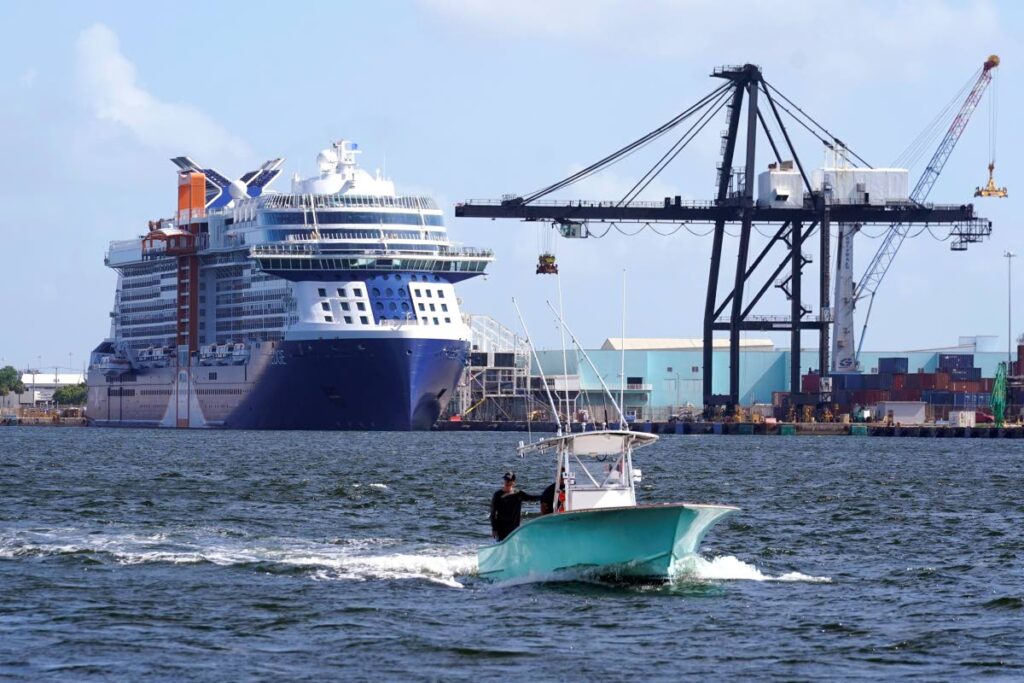Filthy air, dirtier seas

There is a mesmerising gulf in the narrative about climate change and how we are to mitigate the worst effects of our reliance on fossil fuels.
We have all now, even the recalcitrants, accepted that we, perhaps more than our planet, are pretty much doomed unless we do something radical to stop the steady rise in global temperatures that has put nature into a fury. Our actions are causing environmental mayhem.
At the level of the citizen, focus has been very much on carbon emissions from cars and planes and even on methane gas from bovines. Much less has been said about shipping and the massive contributor the world’s maritime industries constitute.
For us in the region, the conversation about the causes of climate change and our own contribution to it is an uncomfortable one. TT is an old energy-based economy and Guyana is all poised to be one of the biggest regionally, whilst many of our other smaller economies depend on tourism, almost entirely.
The pandemic was in many ways a godsend for the planet, keeping aeroplanes out of the sky and cruise liners moored for nearly two years, but we have to live with the economic consequences.
In a 2021 report, the International Civil Aviation Organisation (ICAO) announced that as airline seating capacity fell by around 50 per cent, only 1.8 billion passengers were taking flights through 2020, compared with around 4.5 billion in 2019. That adds up to a shocking annual loss to the industry of around US$370 billion, with airports and air navigation services providers losing a further US$115 billion and US$13 billion respectively; US$22 billion of that total loss in Latin America and the Caribbean region. Things picked up slightly in 2021, but remain challenging for the airlines, national economies and workers.
Aviation is fundamental to the tourism industry, one of the world’s biggest economic drivers. The effect, therefore, of tourism’s global economic contribution falling by 72 per cent below 2019 pre-pandemic levels is not insignificant. According to preliminary estimates of the UN World Tourism Organisation, the reduction is from US$3.5 trillion pre-covid to an estimated US$1.9 trillion in 2021. The cruise-liner sector contributes heftily to that. In 2019, it amounted to more than US$154 billion for the global economy, according to the Cruise Lines International Association (CLIA).
This is where the Janus-headed quandary arises. Notwithstanding the greenhouse gases, many Trinis felt relieved, I am sure, that our national airline, CAL, seemed to have avoided pandemic-induced ruination and has come back looking good and strong, with a new fleet and a rejuvenated staff quotient.
And news reports claiming that the cruise liners are anxious to return to the Caribbean would have made many Caribbean people breathe a sigh of relief – but we all know that moving people around on big boats, for pleasure, is not really an eco-friendly pastime. Cruising is a major pollutant of the sea, air and soils and destroys fragile wildlife habitats. For many island economies, however, it is a question of necessity.
Luckily for the cruise industry, it has escaped scrutiny and regulatory control, although that must change since being irrevocably associated with the spread of covid19.
The maritime or commercial shipping industry has also largely escaped shaming for the massive, if invisible, role it plays in environmental degradation. While most of the focus has been on aviation and road transport, as much as 90 per cent of the world’s goods are transported by sea, in about 70,000 global fleets, all using “heavy” fuel oil (super pollutants) – more than 200 million tonnes annually – and invisibly emitting 2.7 per cent of the world’s global greenhouse gases.

The UN International Maritime Organisation (IMO) has now set targets for a 50 per cent reduction in greenhouse gases by 2050 and 40 per cent in carbon intensity by 2030, compared to 2008 levels.
The big problem, however, is how to change all those old dirty fuel-guzzlers into modern, cleaner engines in a medium timeframe, and deciding which fuel to use. It is alarming to learn that although mandated to burn fuels with less sulphur, many of the largest vessels have fitted technology that still allows them to continue using heavy fuels, because the industry is simply in a pickle.
The cost of transitioning will be a lengthy process, running into trillions of dollars of investment costs, and regulators have not yet agreed on a preferred fuel. Apparently, 2024 will see ammonia-powered ships in service, but global ammonia production is currently three and a half times less than needed to scale up the existing global fleet. Methanol, hydrogen, and battery fuels are also being developed but the numbers are unimpressive. Of the ships on order, currently, only 4.3 per cent will use these fuels. Another 6.1 per cent will use LNG (liquefied natural gas).
So we are staring at the big and dirty maritime transport industry carrying on for the next 20 years using predominantly the most damaging fuels, while the rest of the world scrambles, making hopeful adjustments to limited effect. It is yet another cleavage in the challenging issue of climate change and plotting our way out of it.


Comments
"Filthy air, dirtier seas"